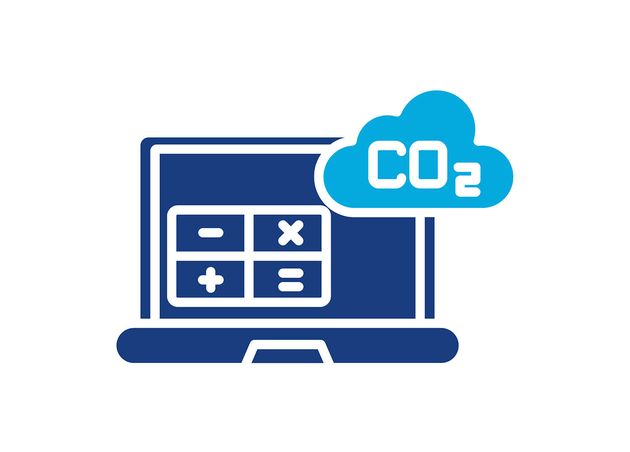Eco-Friendly Living: A Guide on How to Measure Your Carbon Footprint
What is an Ecological Footprint?
Ecological Footprint refers to the impact of an individual or society on the environment. It is defined as the land needed to sustain the continued exploration and exploitation of natural resources. Ecological footprints compare demand and supply: A smaller ratio is a good result as fewer natural resources will be sufficient for an individual.
In general, there are 6 elements of the ecological footprint:
- Forest
- Pasture
- Cropland
- Fishing
- Bush
- Carbon demand
- Built-up land
The ecological footprint indicates the amount of unused potential of the land, its production capacity, or the amount of waste it can store.
Ecological footprint also refers to the amount of land an individual can use. The unit of measure is 10,000 m2/person (hectare/person).
Every Persons’ Global Footprint
The world can meet our needs by up to 1.8 hectares/person; on average, each person will require more than 2 hectares.
The current habitat and comfortable lifestyles of people have come at a high price: The world is faced with climate change –its greatest threat ever.
What is the Environmental Footprint based on?
Our homes, our food, methods of transportation, and our consumption habits all have an impact on the environment. This means our daily lives cause pollution because we don't know the environmental impact of our choices. Some places cause more pollution than others (especially the choice of means of transportation).
Simply put, the ecological footprint is the ratio between biocapacity and consumption (i.e., the ability of the earth to produce the resources we need from it).
Why Calculate Environmental Footprint?
The Global Footprint Network uses the environmental footprint on a national and/or global scale to fix the actual date of the Overshoot Day. This is the day the world's resources will run out of supply.
On the overshoot day, we exceed the greenhouse gases the earth’s ecosystem can eliminate in a year.
History of the Earth Overshoot Day
Because the impact of our environment exceeds the capacity of the world's ecosystem, there has been a need to talk about the ecological deficit for many years. Also, as time passes, this date gets earlier and earlier (e.g., August 20, 2020, July 29, 2021, etc.).
Environmental footprint calculations, therefore, allow us to identify bad practices at the national and corporate levels. This contributes to the creation of a sustainable social model. It allows brands to work on developing a sustainable business model.
Tools for Calculating Environmental Footprint
There are many calculators for environmental footprint. These tools are usually designed as questionnaires divided into different areas: accommodation, food, means of transportation, etc.
Based on the responses collected, the tool determines the gas emissions caused by these consumption behaviors and suggestions for improving areas to accelerate the ecosystem's transition to a better lifestyle.
Examples include the ADEME calculator, the Global Footprint Network calculator, and the WWF calculator.
How to Calculate Your Ecological Footprint
You can learn the following steps by hand to calculate your environmental footprint.
- Step 1:
- Collect complete information about your lifestyle.
- Consider routines, habits, purchases, preferences, and more.
- Step 2:
- Enter the full information into the calculator.
To understand further the steps above, the process is explained below. Calculators for ecological footprint (such as the Global Footprint Network data and those above) work in the following way:
- You will be asked a series of questions about your daily activities. You can make a brief statement or enter more specific data.
- These questions are about the house you live in, the types of food you buy, the number of persons you live with, the energy efficiency of your homes and the source, and your recycling/waste habits.
Once you feed the information into the calculator, you will have your data set that includes the overshoot day and the amount of land needed to sustain the Earth's population despite your ecological footprint and the different ways life can be more sustainable for you.
Environmental footprint data may indicate whether you live below or above the threshold. Some calculators also retain and catalog the maintenance of bio-capacity and National Footprint Accounts and calculate the Environmental Footprints of more than 200 countries, regions, and territories annually.
Many people use information about the United Nations and make all their calculations and research available to the public.
Ideas to Easily Reduce Your Footprint
Reducing the global ecological footprint is possible by making the relevant adjustments. Here are tips to reduce your impact on the environment:
#1 Improve Your Travel
Means of transportation are probably the most important because it is one of the biggest contributors to the ecological footprint. Without a doubt, gasoline/diesel cars and airplanes are the modes of transportation that emit the most pollution.
For this reason, it is best to prioritize walking, cycling, and public transport (train, metro, or bus). If leaving the car in the garage is impossible, CO2 emissions will be limited by using electric cars and carpooling.
#2 Regulate Your Energy Consumption
There are two benefits here: you save your money while helping save the earth. You will achieve this when your electrical cooling and heating system have a reduced environmental impact.
Homeowners can invest in installing new appliances that prioritize using renewable energy. This will help reduce the energy consumption. Tenants can request their landlord to install better thermal insulation and a green alternative.
The temperature in the living rooms should not be heated above 21 degrees, and unused rooms should, on average, be reduced by 2 or 3 degrees.
🌏 Eco Fact!
WWF says 10 to 12 times more greenhouse gases are emitted by electric boilers than heat pumps, photovoltaic systems, or solar panels. Also, heating with electricity consumes energy 6 times more than a heat pump.
#3 Recycle Your Trash
According to Eurostat, the amount of household waste continues to increase in Europe. In 2021, 546 kg of waste per capita was produced in France. Improving recycling prevents the extraction of new natural resources while giving new life to waste.
#4 Try New Eating Habits
We need to rethink our consumption on an individual scale to reduce this value. Similarly, eating sustainably implies implementing some good decisions—lower meat consumption to adopt a vegan, vegetarian, or flexible diet. Rather than consume ready-to-eat foods to store in the freezer and imported products, prioritize local, organic, and seasonal products.
🌏 Eco Trivia!
According to ADEME, the environmental impact of food accounts for between 20% and 50% of the ecological footprint in France.
Ecological Footprint vs. Carbon Footprint
Carbon footprint measures the amount of the greenhouse gas emissions (GHG) and carbon dioxide emitted by an individual, business, community, or society because of their daily activities. Each individual has a carbon footprint because all of our daily activities involve activities that cause carbon emissions.
This uncomfortable truth can be difficult to understand and handle. But we can turn uncertainty and fear into passion and motivation to inspire and create change. Since each person has a carbon footprint, then each person can reduce their emission of CO2. The control and power are in your hands to be responsible for your emissions and pollution.
There are several calculators on the internet to calculate the carbon footprint of any individual. The calculator will ask questions about how you shop, your home's energy consumption, travel, commuting, etc. These factors are important to determine where you contribute most to carbon emissions so you’ll know where to adjust.
To cut CO2 emissions, knowing what areas of your life are generating the most emissions is important. Next, you can develop an action plan to make improvements. Carbon footprint calculations are useful for preserving our beautiful planet.
How is an Ecological Footprint Different?
Although the term "ecological footprint" is not as common as carbon footprint, it doesn't make it any less important. The similarity is that they are both ways of measuring the use of the earth’s resources and the effects they cause.
Carbon footprint focuses on greenhouse gas emissions, while ecological footprint deals with the amount of land used for different purposes, such as farmland, fishing, grazing, and how much productive land we have left. It examines how much land a business or product requires to work and compares this to the number of available productive land.
Knowing the above, let's now start making sustainable choices to secure a better future for the generations to come!
Eco Bear

























